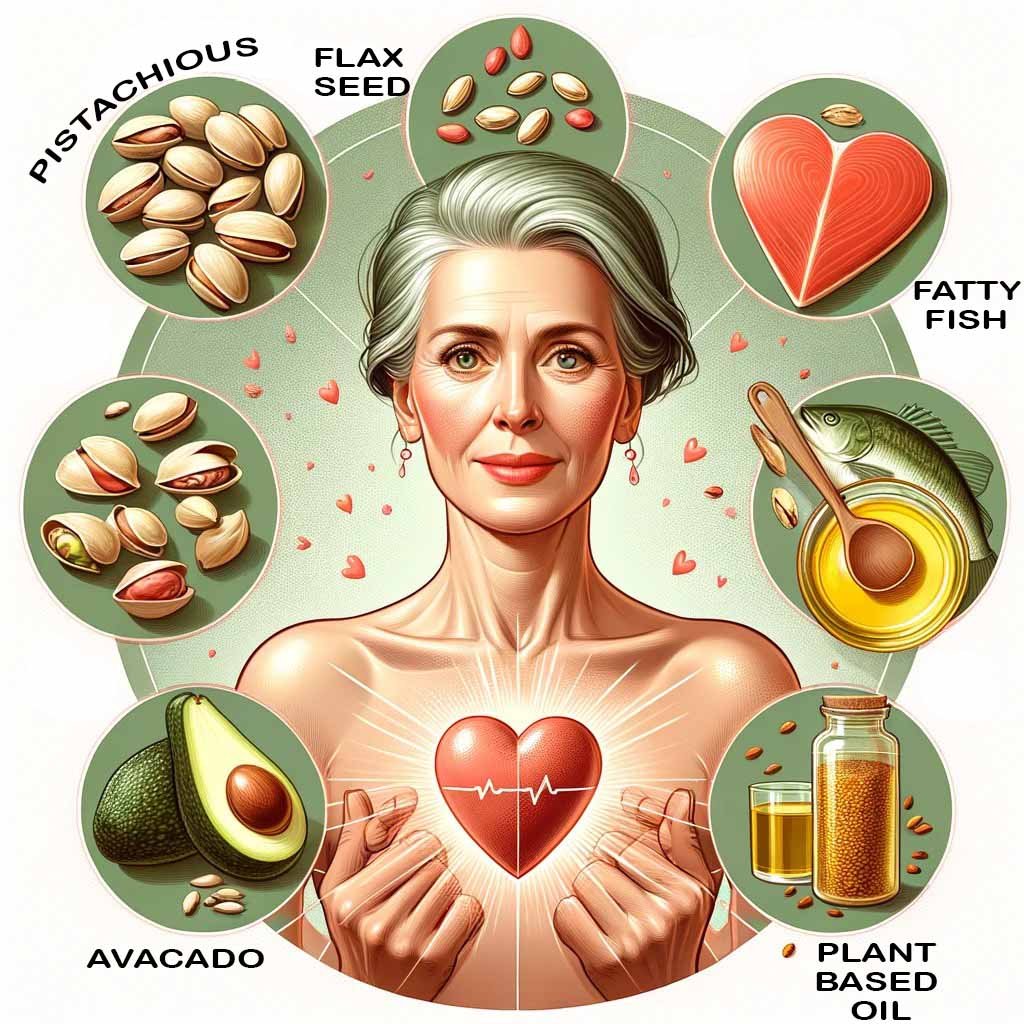5 Fats to Help Lower Your Cholesterol – Suggested By A Dietitian
Although cholesterol has a negative reputation, it is actually essential for good health. Actually, the body uses cholesterol—which…
Although cholesterol has a negative reputation, it is actually essential for good health. Actually, the body uses cholesterol—which is produced by your liver—in a variety of ways, including the synthesis of hormones. LDL cholesterol, or “bad” cholesterol, can rise when certain forms of fat—such as saturated and trans fat, which are present in fatty meats and fried foods—are consumed in excess. As to the American Heart Association, this particular sort of cholesterol has the potential to build up in arteries, hence elevating your risk of heart disease and stroke.
It’s significant to remember that added trans fats were formerly mostly found in processed foods, but they are no longer permitted by the Food and Drug Administration. Still, there are several foods that naturally contain trans fats.
Ideal Levels of Cholesterol
According to the Centers for Disease Control and Prevention, you should strive for the following cholesterol values:
- Cholesterol overall: less than 150 mg/dL
- Less than 100 mg/dL of LDL cholesterol
- At least 40 mg/dL of HDL cholesterol for men and 50 mg/dL for women
To get your cholesterol levels within the proper range, you must reduce your intake of saturated and trans fats. Conversely, a variety of heart-healthy fats can raise “good” HDL cholesterol and/or lower LDL cholesterol, or both, to improve cholesterol levels. Monounsaturated and polyunsaturated fatty acids are examples of unsaturated fats. “A wide range of foods, from animal-based, like fish and seafood, to plant-based, like nuts and seeds, are rich in mono- and polyunsaturated fats,” notes Maria Laura Haddad-Garcia, senior nutrition & news editor at EatingWell. These are simple enough to put on your dish tonight or toss together for a snack this afternoon.
The Top 5 Fats to Lower Cholesterol
The kind of fat you eat matters when trying to lower your cholesterol levels. These five meals include important unsaturated fatty acids that, according to study, help lower cholesterol.
Pistachios
For your next snack, you should definitely grab a handful of these. Consuming pistachios for approximately 12 weeks reduced total cholesterol by 7 points, LDL cholesterol by 4 points, and triglycerides (an additional form of fat) by the same amount, according to a 2021 meta-analysis of 12 randomized controlled trials published in Critical Reviews in Food Science and Nutrition. (The daily intake of pistachios ranged from one ounce to several hundred depending on the study.) The body’s ability to break down fatty acids may be enhanced by these tiny nuts, which also contain potassium, vitamin E, and antioxidants, which may reduce inflammation and enhance blood vessel function. Furthermore, phytosterols—plant chemicals with the ability to reduce cholesterol—are present in pistachios. One ounce, or forty-nine kernels, of pistachios has thirteen grams of fat and 159 calories, according to the USDA. This Pistachio & Peach Toast is a tasty and heart-healthy afternoon snack, according to Haddad-Garcia.
Flaxseed
It’s time to add some flax to your porridge in the morning. An ounce of flaxseed taken daily for 12 weeks by adults with hypertension reduced their systolic blood pressure (the top number on a blood pressure reading) by 13 points when compared to a placebo group whose blood pressure went up by 2 points, according to a 2022 clinical trial published in Explore. Furthermore, the total cholesterol of the flax-eaters decreased by over 20 points, whereas the placebo group’s dropped by only 12 points.The American Heart Association states that lowering your cholesterol is a wise move if you have high blood pressure since excessive cholesterol causes plaque deposits in arteries over time, which make it harder for blood to flow through vessels and raise blood pressure. A tablespoon of ground flaxseed contains 3 grams of fat and 37 calories. Add flaxseed to your banana bread the next time to up your dose of heart-healthy fats.
Avocado
The Centers for Disease Control and Prevention report that about one in five persons had low levels of HDL cholesterol. Higher cholesterol levels may be better for your heart health, even though this is just one measure of cholesterol. According to the AHA, HDL is regarded as the “good” kind of cholesterol since it transports LDL from the arteries back to the liver, where it is metabolized and eliminated from the body. In summary, you can increase your HDL by using avocado in your next salad or by snacking on veggie slices dipped in guacamole.According to a 2018 review and meta-analysis published in The American Journal of Clinical Nutrition, individuals who ate avocados had higher HDL levels than those who did not. Rich in fiber, monounsaturated fats, and plant sterols, avocados are a creamy fruit that, according to studies, may help lower cholesterol. Starting your day with a traditional avocado-egg toast is a tasty and heart-healthy option.
Plant-Based Oils
Heart-healthy oil used sparingly will take care of it. Contrary to popular belief, olive oil is not the only plant-based oil that is healthful. Haddad-Garcia adds, “You can promote your heart health by consuming other plant-based oils like avocado, sesame, peanut, and canola.” Really, according to a 2018 meta-analysis published in Critical Reviews in Food Science and Nutrition, plant-based oils high in plant sterols and antioxidants that lower cholesterol have been demonstrated to cut triglyceride and total and “bad” LDL cholesterol levels even more than olive oil.However, this does not imply that you should stop using olive oil: The best oil for raising “good” HDL cholesterol levels, according to the experts, is olive oil. Additional studies, such one published in Molecular Nutrition & Food Research in 2019 have demonstrated that routinely drinking olive oil supports the function of HDL cholesterol.
Fatty Fish
It’s almost time to serve supper, which should really be fatty fish. Research published in the British Journal of Nutrition in 2020 found that people who eat the most fatty fish—at least 8 ounces per week—have better HDL cholesterol and more favorable cholesterol profiles than people who eat the least—less than 4 ounces per week. This finding may help reduce the risk of cardiovascular disease. Omega-3 fatty acids, which are abundant in fatty fish, can lower blood pressure, inflammation, and the risk of blood clots. Two delicious suggestions to spice up dinner today are Sheet-Pan Salmon with Sweet Potatoes and Broccoli and Spicy Sardine Linguine.
Additional Guidelines for Lowering Cholesterol
According to the American Heart Association, if you have high cholesterol, making the following lifestyle adjustments and receiving medical attention can help bring your cholesterol back within a healthy range:
Eat a diet high in heart-healthy foods. A heart-healthy diet is rich in fruits, vegetables, whole grains, lean meats (such as chicken, turkey, and fish), nuts and seeds, legumes, and heart-healthy fats.
Increase your movement. Exercise raises ticker-protective HDL levels, which is awesome.
Give up smoking and vaping. A wonderful place to start is by calling 1-800-QUIT-NOW, the CDC’s help line.
Maintain a healthy weight. Maintaining a healthy weight can be greatly aided by eating a heart-healthy diet and engaging in regular physical activity. A little weight reduction of 5% to 10% of your present body weight can have an impact.
Talk about medications. To help lower your cholesterol, ask your doctor if you need to start taking a statin or other cholesterol-lowering medicine and combine it with the preceding healthy lifestyle changes.
In summary
“Fat is typically associated with negative health effects, particularly in relation to cholesterol regulation. Haddad-Garcia adds, “But you don’t have to get rid of it entirely. You can better control your cholesterol by making little dietary adjustments. One is to consume fewer foods high in saturated fats (like fatty red meats) and increase your consumption of foods high in unsaturated fats (such nuts and seeds, avocados, some plant-based oils, and fatty fish).







